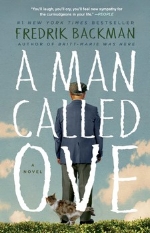Ties Domenico Starnone (in Italian, 2014)
Translated by Jhumpa Lahiri (in English, 2016)
The marriage of Vanda and Aldo is the centerpiece of Ties, and novelist Domenico Starnone offers us multiple perspectives on that relationship without coming to any definitive conclusions about it. First, we have the texts of letters that Vanda wrote to Aldo in the 1970s, when he left her and their two young children to live with a much younger woman. Vanda rants and raves about Aldo’s departure, and her voice is totally believable. The next section of the novel is narrated by Aldo in the present day, some forty years later, with glances back to earlier phases of his life. In the final section, we hear from Vanda and Aldo’s adult daughter, Anna, who recounts conversations with her brother, Sandro, in the present day. As readers, we have to assess the reliability of these differing viewpoints, with their differing views of the marriage of Vanda and Aldo.
Aldo, speaking as an elderly man, tells us, “At my age, it’s easy to turn a suspicion into a valid hypothesis, a valid hypothesis into an absolute certainty, an absolute certainty into an obsession.” (114) This could be a warning for the reader of Ties: watch what you accept from the narrators, from Vanda and Aldo and Anna. All is not as it seems, and pure truth is elusive.
In her translator’s introduction to Ties, Jhumpa Lahiri, herself an accomplished author of fiction, writes about the complexity of Starnone’s themes: “The entire structure of this novel, in fact, seems to me a series of Chinese boxes, one element of the plot discretely and impeccably nestled within the next. There is no hole in the construction, no fissure.” (12)
There are physical boxes in Ties, including the “box” that is the apartment in Rome where Vanda and Aldo live. On a shelf in that apartment is a shiny blue decorative cube that Aldo bought in Prague. It has a hidden compartment that holds secrets. Other boxes turn up, such as the box that contains a medical device for Vanda. Starnone also seems to point to metaphorical boxes that people construct around themselves, such as marriage, family, job.
The cover of Ties has a picture, which you can see in the inset to this review, of tangled shoelaces on the shoes that a man is wearing. The drawing, selected by the author, points to another major metaphor of the novel: the ties between people. For instance, speaking to Sandro, Anna comments, “The only ties that counted for our parents were the ones they’ve tortured each other with their whole lives.” (135)
Our translator tells us that the Italian title for this novel, Lacci, is literally “shoelaces” but also has the connotation of “a means of bridling, of capturing something.” (17) Most literally, the title connects to the unconventional way that Aldo ties his shoelaces. Aldo taught his son, Sandro, to tie shoelaces in this way when Sandro was very young. Anna has always noticed this, and she comments, “It’s true, only the two of you tie your shoes like that.” (98) Perhaps, like shoelaces, some of the ties between people are universal and others are unique.
I caught a few typos, but Lahiri’s translation is sparkling—idiomatic and accessible, unlike translations of some other Italian novels that I’ve tried. I don’t want to wade into the controversy about how autobiographical Ties might be. Domenico Starnone is married to Anita Raja, who is allegedly the author behind the pseudonym Elena Ferrante, the author of the four-volume Neapolitan Novels that are wildly popular all over the world. Like Starnone, Ferrante treats issues of marital infidelity and of the ties that bind families and friends together. But Starnone’s Ties stands on its own and is a delight to read.




